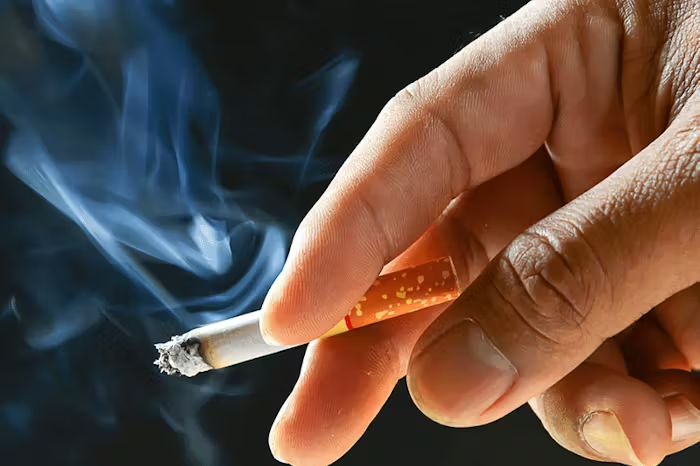Sustainable Solutions to Cigarette Butt Pollution
When strolling through city streets or walking along a picturesque beach, it is expected to encounter an all-too-familiar piece of litter: the cigarette butt. Despite its small size and seemingly insignificant nature, this tiny remnant of smoking behavior masks a far-reaching environmental problem. Cigarette butts are not only an aesthetic nuisance but are among the most prevalent forms of litter worldwide. Comprised of materials like cellulose acetate, these filters are non-biodegradable, leading to persistent pollution that affects numerous ecosystems. The broader consequences of discarding cigarette butts improperly extend well beyond the initial act, impacting both our environment and society at large.
Understanding the Scale of the Problem
Globally, billions of cigarette butts are discarded annually, making them one of the most littered items on our planet. The main reason behind this concerning pattern is the tiny size and widespread presence of cigarette butts, leading people to dismiss them as insignificant litter. However, the cumulative effect of this litter results in substantial environmental challenges, exacerbated by the fact that the filters are designed to last. They are not biodegradable, and their accumulation in the natural environment can lead to long-term harm as they persist for years, breaking down into microplastics that further pollute the ecosystem.
Environmental Impact
Cigarette butts might be small, but their environmental impact is profound. When thrown on the ground or washed into storm drains, these butts release harmful chemicals such as lead, arsenic, and nicotine, which can leach into soil and waterways. These toxic substances are detrimental to aquatic life, often poisoning marine organisms when cigarette butts end up in oceans, rivers, and lakes. Birds and marine animals frequently mistake cigarette butts for food, ingesting them and suffering severe health consequences, ranging from intoxication to starvation due to false satiation. Over time, the presence of cigarette butts in the environment can disrupt entire ecosystems, undermining biodiversity and natural processes.
Societal Consequences
Apart from the evident environmental degradation caused by cigarette butts, there is also a significant societal cost. Urban landscapes, parks, and nature reserves affected by this litter seem less appealing, detracting from the natural beauty of these spaces. This aesthetic damage can impact tourism and local enjoyment of public spaces. Furthermore, the financial burden related to the cleanup of cigarette butt litter is considerable. Governments and municipalities must allocate substantial resources to manage this persistent waste, diverting funds from other crucial areas like education or infrastructure.
Successful Initiatives Worldwide
Various global efforts have been put in place to address this increasing problem, achieving different levels of success. For instance, recycling programs have made considerable progress by focusing efforts on collecting and repurposing cigarette butts. By transforming waste into new products, these initiatives have showcased the potential of recycling to counteract environmental pollution. Moreover, cities around the world have engaged in awareness campaigns and installed public disposal units designed explicitly for cigarette butts. These programs emphasize the need for concerted efforts in addressing the problem, as evidenced by various successful models. You can dive deeper into this topic through a detailed report on global efforts that provide insight into tackling cigarette butt pollution.
Practical Ways to Reduce Butt Litter
Individuals play a crucial role in reducing cigarette butt pollution. Smokers can be encouraged to carry portable ashtrays to ensure that butts are disposed of properly, wherever they are. Placement of easily accessible cigarette disposal bins in public areas can significantly reduce littering incidence. Moreover, organizing community cleanup drives can serve as a practical means to address existing litter and as an outreach tool to raise awareness about the extent of the problem and motivate individuals to change their disposal behaviors.
Engaging the Community
Community engagement is pivotal in mitigating cigarette butt litter. Raising awareness through educational campaigns in schools and multimedia outlets can instill a sense of environmental responsibility. Community groups, local governments, and environmental organizations can disseminate information and foster habits of proper waste disposal. Moreover, involving locals in environmental days and giving talks on the implications of butt litter on ecosystems can nurture a collective responsibility and long-lasting behavioral changes within communities.
Policy and Legislation
Measures taken through policy and legislation also contribute significantly to controlling cigarette butt litter. Existing laws may impose fines on individuals caught littering or provide support for programs that encourage proper cigarette disposal. However, enforcing these regulations effectively remains a challenge. Enhanced policymaking could include provisions for requiring tobacco companies to contribute to cleanup efforts or introducing eco-friendly product designs. Legislation favoring the implementation of Extended Producer Responsibility (EPR) can further aid in reducing butt litter by shifting part of the waste management responsibility onto the producers themselves.
Future Directions
Innovative solutions are on the horizon, with researchers exploring the potential for biodegradable filters to replace traditional non-degradable ones. Advances in this field could dramatically lessen the environmental impact of smoking. Parallel efforts into efficient recycling processes ensure that the waste generated is minimized and possibly redirected for beneficial applications. The quest for sustainable practices is driven forward by technological developments that aim to reconcile industry demands with environmental sustainability. A look into ongoing research and innovations reveals promising pathways toward replacing harmful cigarette filter materials, supporting ecosystems, and maintaining industry standards.
In conclusion, cigarette butts, although small and frequently overlooked, have a sizeable environmental impact. Through global initiatives, individual actions, community engagement, and legislative efforts, society can address this challenge and advance toward a cleaner and more sustainable world.

Leave a Reply